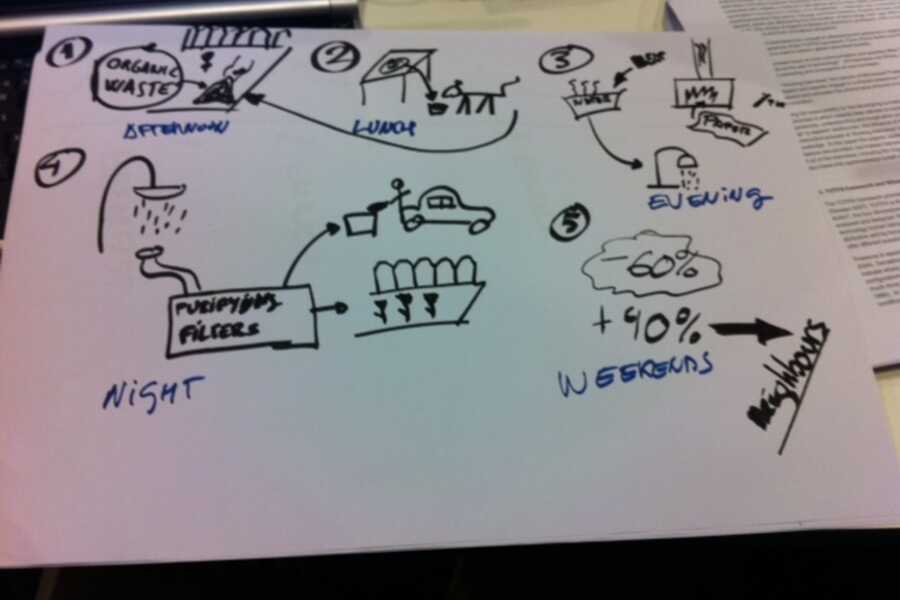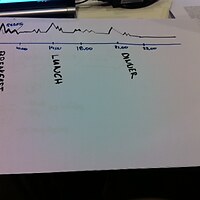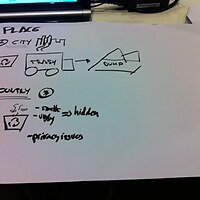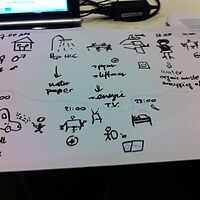For the first asigment of the afternoon, we had to form a three person group in order to present the issue of waste from the YUPTA framework point of view and visualize our thoughts. To do this we decided to go through a typical day of a four member family and analyse how waste affects their lives.
The main sources of waste are water, paper, leftovers, organic waste, energy, etc. So we drew the rythm of waste production to visualize how waste increases or decreases during the day. Our conclusion was that peaks can always be found at the meal times. During the night there is no production of waste at all.
Another important factor is the location of the house: if it is in a city, the best way of getting rid of the waste is using the city bins, so that the trash will end up in the dump. But if the house is in the country, we came up with some solutions: using organic waste as a fertilizer for the garden, using leftovers of the meals to feed pets, burning paper waste in the fireplace to use the heat to warm water or even warm the room, installing purifying water filters that allow us to reuse the water to do some activities such as washing the car or watering plants.
By these means, we manage to reduce the amount of waste to 40%. The rest cannot be recycled so we can negotiate with our neighbours to have a common container to collect this garbage. Then we can dispose them once a week.
To finish our project we remarked the fact that waste is not an issue people like to talk about or to be around (concernig smell and aesthetics), so it´s usually hidden.
At the conclusion of our presentation we came up with a question: is it possible to make waste interesting to the public? We may answer this question in a few days...





